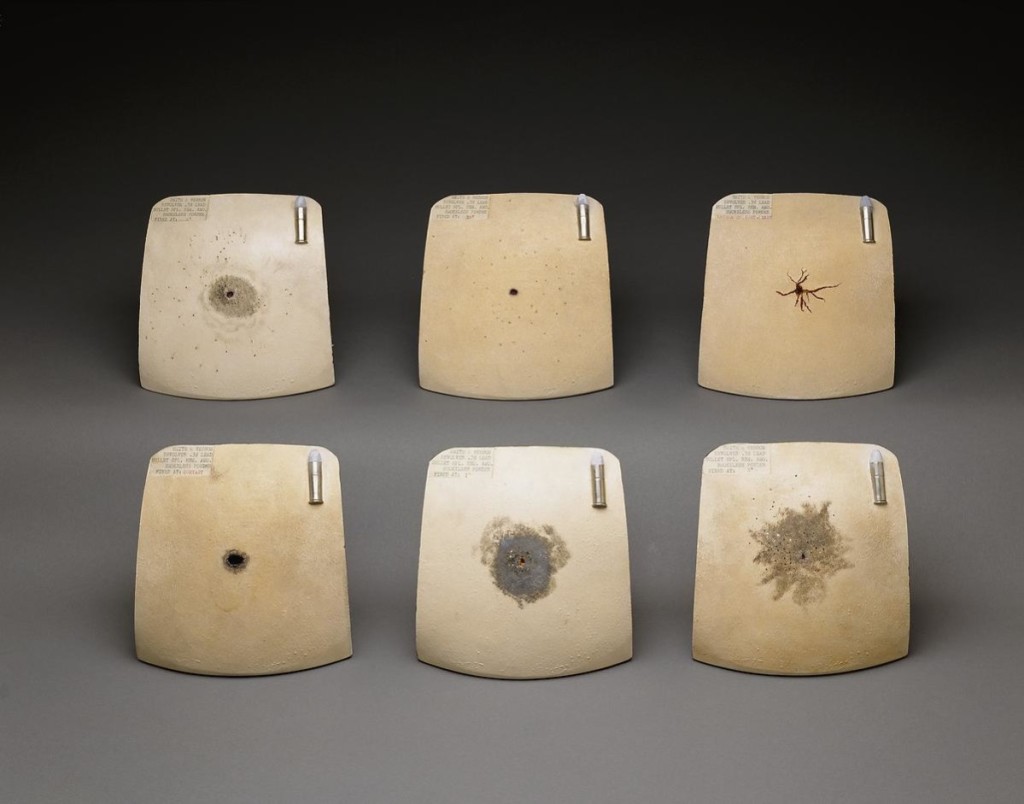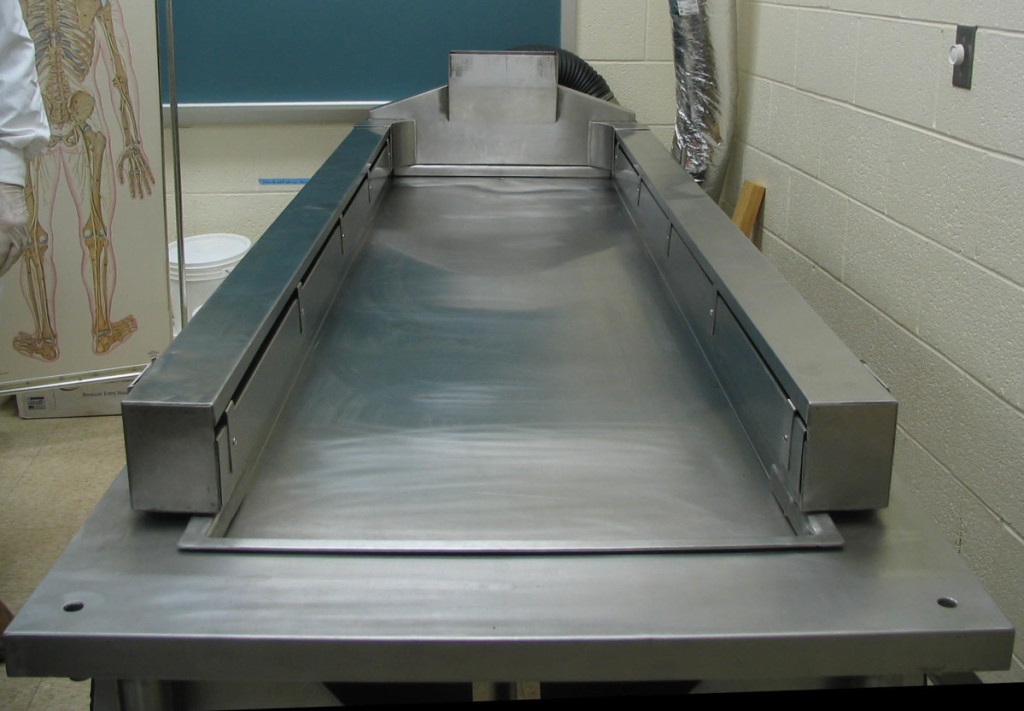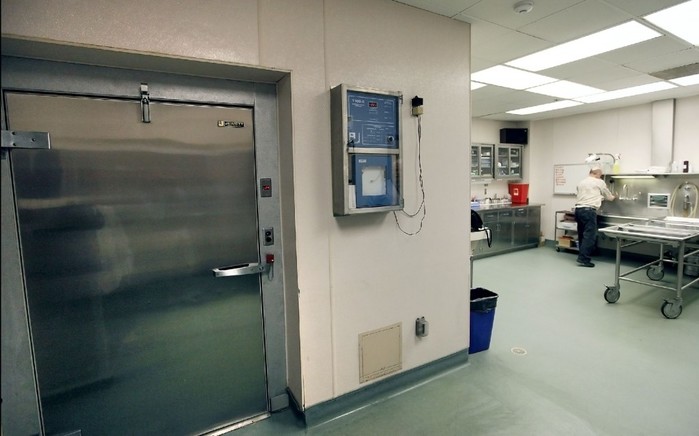All deaths come as a shock, but some result from such unusual, unexplained, or suspicious circumstances that they demand special treatment. Wisconsin law requires any person, particularly physicians and authorities of hospitals or sanitariums, to report the sudden death of another to either the Sheriff or the Medical Examiner. Here in Dane County, if a law enforcement officer receives a report of a person’s death and determines that it may have involved unusual or suspicious circumstances such as homicide, suicide, abortion, poisoning, or accident, the death must be reported to the county’s Medical Examiner’s office for investigation. At a hospital, a “sudden” death is considered one that takes place within 24 hours of a person’s arrival.
On an average day, the Medical Examiner’s Office can expect to receive between six to eight calls for service at any hour of the day. Medical investigators attend to these calls around the clock. Once the calls come in, a member of the office’s team of four medical investigators and seven part time investigators heads to the scene to determine how the death occurred. To accomplish this, the investigator will evaluate the body, conduct any further investigations or interviews she deems necessary, and prepare a triage note with a synopsis of the findings. Senior investigators have the authority to pronounce a person’s cause of death and sign the death certificate; novice investigators must send their reports to the medical examiner first.

Frances Gleaner Lee commissioned these six ceramic chest plates, circa 1940, to use as a teaching and reference tool. The plates illustrate the typical wound patterns caused by gunshots fired from a variety of weapons at different distances. Credit: National Institutes of Health, Health & Human Services. Source: Office of the Chief Medical Examiner, Baltimore, Maryland. From exhibition “Visible Proofs: Forensic Views of the Body,” U.S. National Library of Medicine.
These reports and death certificates are crucial for settling estates, insurance claims and criminal cases. As Barry Irmen, Chief of Operations at Dane County’s Medical Examiner’s Office, points out, each of these investigators will see more than 500 dead bodies in any given year, more than most law enforcement officials will see in their entire career. Approximately twenty percent of these cases are sent to the medical examiner for an autopsy, either because the body is part of a crime scene investigation, is unidentified, or more information is needed to determine the cause of death.
In 2014, the medical examiners performed more than 394 autopsies–129 more than 2010–and the office’s caseload saw an overall increase of 47% from 2011 to 2014. As a result, the office’s operating budget increased in 2014 to $1.6 million. To undertake this burgeoning workload of around 400 autopsies a year, Dane County hired Dr. Vincent Tranchida as its first Chief Medical Examiner in 2011 and Dr. Kristin Roman as its first Deputy Medical Examiner in 2013 (Hesselberg, 2011; 2013).
Dr. Tranchida’s hiring took place just as Dane County transitioned from an elected coroner to an appointed medical examiner in 2011. According to a 2011 investigation by NPR, Frontline and ProPublica (“Post-mortem death investigation in America,” 2011), Wisconsin is one of 29 states that do not require training for coroners or medical examiners. Elected coroners simply have to receive more votes than anyone running against them.
At $190,000 annually, the Wisconsin State Journal reported Dr. Tranchida to be Dane County’s highest paid employee in 2011 (Hesselberg, 2011). However, as a forensic pathologist, his road to a career as a medical examiner has been a long one, beginning with his studies at medical school in Michigan to working for the Office of the Chief Medical Examiner in New York City. While there, he also worked as a volunteer at the site of the 9/11 attacks, identifying human remains (Hesselberg, 2011). Dr. Roman also hails from the Office of the Chief Medical Examiner in New York City where she worked as deputy chief (Hesselberg, 2013).

Cadaver dissection table similar to those used in forensic autopsies. Credit: “Cadaver dissection table – long shot”. Licensed under CC BY-SA 3.0 via Wikimedia Commons.
Together, Drs. Tranchida and Roman are now performing the autopsies that previously had to be conducted by doctors from UW Hospital, when Dane County was still under the coroner system. Irmen points out that contracting with the UW Hospital was getting to be expensive: the price tag of each autopsy was quite steep, at $1,500 per autopsy, excluding the additional costs of toxicology and histology reports. Additionally, Drs. Tranchida and Roman are now also performing autopsies for sheriff’s departments in neighboring counties, bringing in an additional revenue stream for Dane County while providing autopsy services at a reduced price for neighboring counties.
The Medical Examiner’s Office also works with the challenge of unclaimed and unidentified bodies. The team of investigators at the office has a serious mandate to provide every body with a respectful disposition. “Every person whose body is autopsied is also our doctors’ patient,” said Irmen, and he or she “deserves a peaceful disposition.” The problem, however, is that some bodies remain unclaimed. The office dedicates significant effort and time to try to locate a body’s next of kin or friends. Usually, this process only takes a couple of days, but it can sometimes take much longer. The problem, says Irmen, is that someone has to be looking for them. In some cases, the office has had to spend one to two years persuading a family member or friend of the deceased to claim the body. In these cases, families typically accept only after the Office has agreed to cremate the body at the county (and taxpayers’) expense.
Irmen laments that he has seen this trend begin to rise in the last decade and speculates its cause to be a weakened economy and increasing transience and isolation. In five or six cases, said Irmen, the families of the deceased have refused to receive the cremains altogether. Yet Irmen has chosen to safeguard these cremains by keeping each of the urns in his office until the county can purchase a crypt and provide the deceased with the “respectful and peaceful disposition” that the Office strives to provide.

A freezer in the Dane County morgue, where two unidentified bodies have been housed for over a decade. Photo by John Hart for the Wisconsin State Journal.
Unidentified bodies pose an even bigger problem. Currently, there are two unidentified bodies that share the morgue’s small freezer. Irmen reports that the bodies have been there for at least ten years. Other sources (Simms, 2010) claim that the skeletonized remains of one of the bodies has sat in the morgue’s freezer since 1989, while the second body arrived in 2002. The medical examiner’s office will never cremate an unidentified body in the hopes that future advances in science will unlock the possibility of identifying the deceased person and providing his or her family with the opportunity to receive the body’s cremains. Currently, Irmen says the medical examiner’s office plans to send these two bodies to the University of North Texas, where a forensic anthropology exam is done for free. There, they hope to receive the best DNA information that science can give them, after which Dane County will purchase two plots and bury the bodies. The DNA information will then be entered into the federal government’s database of missing people, and if there is ever a hit in the database or a technological advance in DNA testing, the County will dig up the bodies’ remains.
Back to Top | Geography of Death Main Page | Overview of Death Care Industry | Muckraking and Consumer Protection | Zoning
Sources:
Barry Irmen, Chief of Operations at Dane County’s Medical Examiner’s Office, in discussion with the author, April 9, 2015. We thank him for sharing his expertise and experience, however this page does not necessarily reflect the views of Irmen or the Medical Examiner’s Office.
Hesselberg, George, “New Dane County medical examiner ready for job,” Wisconsin State Journal, January 31, 2011. Accessed April 12, 2015. http://host.madison.com/news/local/crime_and_courts/new-dane-county-medical-examiner-ready-for-job/article_f0e146d8-2caf-11e0-b191-001cc4c03286.html.
Hesselberg, George, “Dane County to get another physician in medical examiner’s office,” Wisconsin State Journal, June 21, 2013. Accessed April 12, 2015. http://host.madison.com/news/local/dane-county-to-get-another-physician-in-medical-examiner-s/article_4d052f22-c37c-5fc7-8939-679306489c1b.html.
“Post-mortem death investigation in America,” NPR, Frontline, and ProPublica. February 1, 2011. Accessed April 12, 2015.
http://www.pbs.org/wgbh/pages/frontline/post-mortem/.
Simms, Patricia, “Area morgues facing more unclaimed bodies,” Wisconsin State Journal, : December 14, 2010. Accesssed April 12, 2015. http://host.madison.com/news/local/crime_and_courts/area-morgues-facing-more-unclaimed-bodies/article_240fafbe-04be-11e0-bb3c-001cc4c002e0.html.
